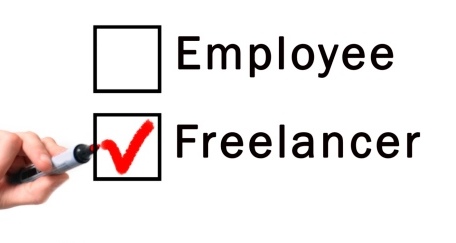Hire an employee, freelancer or agency: how to understand who you need?

Different types of contractors mean different prices, different process/approach and, therefore, different results. Someone will do it faster and cheaper, but will stop contacting you after the third round of edits. Someone will do well, but will charge more than the average market price. In this article we will analyze with whom it is more profitable to work, depending on the type of your tasks and the scale of your business.
Employee
If a company has a constant flow of one-type tasks, it is more advantageous to assemble your own team. Finding and hiring staff will be easier than selecting a contractor each time, describing the task and drafting the terms of reference, concluding the contract and agreeing on the result.
In addition, agencies will not learn from each other’s experience (each time it will be a new immersion of a third party in your context), and a person in the staff will be able to solve the tasks he is already used to more effectively each time.
Keep in mind: the most talented performers are more likely to choose to build a career at an agency and rarely go to the client side. At the agency the tasks are constantly changing, you can quickly develop and gain experience on projects in different industries.
At a children’s toy factory, for example, a designer or editor will have a stream of monotonous work: packaging, price lists, posters, banners. Ambitious performer quickly bored, will have to either significantly raise his salary, or look for ways to add variety to the working routine.
In this case, even with permanent tasks, the company does not have to keep an employee on staff. Small studios – we’ll talk about them next – are sometimes willing to work on an hourly rate and cover the amount of tasks that you need right now.
A lot of tasks – the contractor gets more involved. The flow of tasks is down – you don’t have to overpay. Plus, you save on all the costs associated with hiring, developing, and providing a full-time employee with everything you need.
-
Freelancer
If you have a small business and suddenly have a few creative tasks, it’s beneficial for you to find a freelancer. For example, a freelance illustrator for a few months will cost you less than five illustrations from a large agency.
It’s easiest to work with a freelancer when you have a clear idea of the result or, for example, the agency has prepared a detailed brand book and corporate identity guidelines for you. When a freelancer has something to lean on, he or she will solve the problem more efficiently. Otherwise, at first you’ll be bogged down in finding a common language and style for the work.
To look for freelancers, use profile platforms like Behance and Dribbble for designers.
You can explore the profile telegram channels and groups on social networks, and do not forget about the power of Facebook: post in your feed that you are looking for a designer to design a booklet – by evening you will find a dozen specialists. Not only freelancers, but also companies often respond to such requests, so it is best to state right away what type of contractor you are looking for and how much you are willing to pay.
We do not recommend using the services of performers from upwork.com, as there is a much higher risk of finding an amateur or incompetent specialist. The approach to building interaction between customers and specialists on these sites is outdated, and most experienced freelancers left them long ago.
-
A small agency
The basic principle worth adhering to is that the level of the agency must match the level of the client. If a company employs 10 people, it is not profitable to order brochure design from a large agency that employs more than 100 people. They will refuse the task or ask for a significant budget for a simple project.
It is logical for a small company to look for small agencies: as a rule, these are young companies which understand the problems of small business, ask for less and are prepared for short projects. Such agencies are usually willing to take on the implementation of the client’s creativity with their own hands.
The difference between a micro-agency and a freelancer is the complexity of the tasks. A small team can be entrusted with complex work, such as text and design of a webpage, layout and chain of letters after the purchase, creating a script and shooting a commercial, developing creatives for banners and setting up an advertising campaign. Alone, a freelancer is more likely to abandon such a project for lack of competence, or to take much longer to complete it.
There is a concept of “retainer” or “outstaffing” – this is the transfer of regular work on design or marketing tasks into the hands of freelancers, usually with payment for time spent, not for a specific result. For example, a client pays a fixed sum of money to a design studio once a month and can outsource some small tasks at any time: layouts, presentations, illustrations.
-
medium-sized agency
Typically, the average agency is a contractor that specializes in producing a certain type of content or providing individual services rather than a comprehensive marketing service. Often such companies concentrate their expertise in a narrow profile, for example in video clips, web design, or advertising on social networks.
We at Rocket Motion specialize in related services: graphic design, animation, digital. In all of the above products, similar competencies of designers, managers, and analysts play a key role. Such contractors do most of the work in-house, without subcontracting large-scale tasks.
If a medium or large business has a point creative task, it will look for a mid-sized agency. Often such contractors work on projects in close liaison with employees on the client’s side. That is, the client not only accepts the result, but is also actively involved in the process. For example, the agency prepares the logo and corporate identity, while the client’s designers create posters and presentations. Or marketing department on the client’s side wrote the script and gave the agency the task to create a commercial based on it. That is, it’s advantageous for the agency to assign a large creative task or control over the process, and delegate subtasks to employees or freelancers.
If you bring a non-core task to an average agency, the most honest contractors will refuse, and the most cunning ones will subcontract or do poorly, hoping for the client’s promiscuity. Before agreeing to cooperate, study the agency’s portfolio and clarify what services they specialize in.
Small and micro businesses can come to a medium-sized agency if enough tasks accumulate. For example, if you need to create 10 webpages, it is easier to commission one agency to develop them for $10k than to spend six months looking for freelancers and coordinate their work. $10k will be cheaper than six months of the marketing director’s time + the cost of freelancers
-
Big creative agency
Agencies are used when there is a large budget and the need to solve a strategic business problem. Most often, large brands work with such agencies. A large agency will undertake the development of strategy, creativity, organize and supervise the production, subcontracting it to productions of various levels.
In addition to the high, and in most cases simply unaffordable cost, for small and medium-sized businesses, working with an agency can be complicated by creative disagreements. Such a contractor has disproportionately more experience and insight than the client. In addition, such a contractor will not hesitate to say directly what he thinks about certain client proposals.
This will all be backed up by great credibility. (In fact, any contractor, starting with a freelancer, should openly and directly express his opinion on what is happening in the project, but in practice this is rare). Let’s say you did not like the site design, which was prepared in the agency. An experienced contractor will defend his design to the last, knowing that it helps to solve your business problem and is consistent with current trends.
If you are not willing to work on an equal footing and want to implement your own ideas with someone else’s hands – try to use in-house resources, freelancers, or turn to a smaller contractor.
What that means?
For a constant flow of one-type tasks it is more profitable to hire a person on staff. But keep in mind that the most talented performers usually work in agencies: the tasks there are more interesting.
-If a small business has a few creative tasks and a clear vision of the result, it’s easier to work with a freelancer: he’s cheaper than the agency. Look for freelancers on profile platforms, on telegram feeds and on
Facebook, avoid large exchanges like upwork.com.
-If a small business has a complex and articulated creative task, turn to micro agencies. They understand the specifics of small business better and will take on more complex work than a freelancer. It makes no sense for a small company to go to a large creative agency: they will ask too much or simply refuse to take on a short project.
Medium-sized agencies are used by medium- and large-sized businesses for specific tasks, such as content production: to shoot a video or create a website. Sometimes such agencies can also offer full-service marketing services. Small and micro businesses can come to such a contractor if enough tasks accumulate.
-Agencies in the top ten rankings work with the largest businesses. They go to them for strategy and solving complex business problems: they subcontract the production of content.





